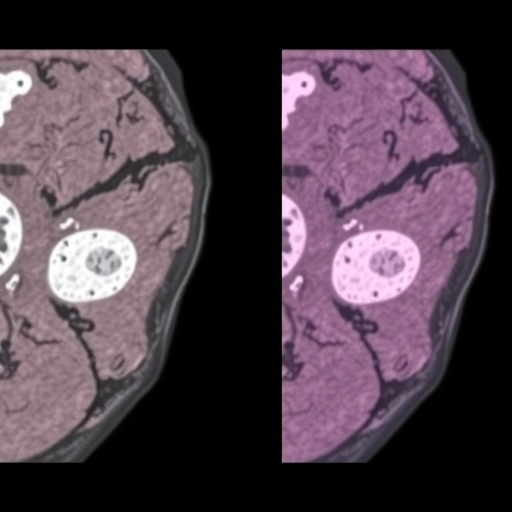Atypical intraductal proliferation (AIP) is emerging as a significant focal point in discussions surrounding prostate pathology. This condition, characterized by its unique morphological attributes, sits at a crucial intersection of diagnostic interpretation and clinical consequence. For years, AIP has been perceived as a borderline lesion within the landscape of prostate disease. Unlike high-grade prostatic intraepithelial neoplasia (HGPIN), AIP displays a higher degree of architectural complexity and cytological atypia. However, it does not scale the diagnostic thresholds necessary to classify as intraductal carcinoma (IDC).
The inherent diagnostic challenges posed by AIP are manifold. It manifests in biopsy specimens with enough ambiguity to leave pathologists and clinicians in a quandary. The defining characteristics of AIP can mimic features of more aggressive pathology, which raises concern for the potential insidious nature of this lesion. As clinicians navigate these murky waters, the prevalence of AIP cases in prostate biopsies raises imperative questions regarding proactive patient management strategies.
Recent advances in research are showcasing how AIP might prove to be a strong indicator of undetected IDC and other severe pathological conditions. As emerging data continues to surface, it becomes increasingly evident that AIP cannot merely be swept aside as a benign or inconsequential aberration in biopsy samples. Its ability to coexist with cases classified as intermediate-risk prostate cancer, coupled with its molecular similarities to IDC, amplifies the need for its appropriate recognition in clinical settings.
Further compounding the complexity surrounding AIP is its recurrent association with genetic alterations commonly linked to more advanced forms of prostate cancer. Loss of PTEN function and the overexpression of the ERG gene are two hallmarks observed with notable frequency in specimens exhibiting AIP. These molecular changes, which often herald a transition to more aggressive disease phenotypes, serve as potential biomarkers that could point to an underlying risk of occult aggressive disease that previously went undetected.
The clinical implications connected to AIP are profound, especially as medical science continues to pivot toward more precise diagnostic techniques and tailored treatment paradigms. As the healthcare community leans into active surveillance strategies for prostate cancer management, understanding the nuances of AIP becomes crucial. This lesion might not only contribute to risk stratification but could potentially redirect the therapeutic approaches adopted for managing patients with prostate cancer.
As the dialogue surrounding AIP evolves, it raises essential considerations regarding patient care pathways. The acknowledgement of AIP as a potential precursor to more severe pathologies necessitates a recalibration of how clinicians interpret biopsy results. Pathologists must exercise heightened scrutiny when evaluating samples that present features consistent with AIP. Such vigilance could very well uncover cases where IDC remains undiscovered, essentially altering the management and therapeutic trajectories prescribed for these patients.
This growing body of evidence also underscores the necessity of enhanced multidisciplinary collaboration. Prostate cancer management, particularly within the realm of atypical lesions such as AIP, is not a solitary endeavor. Urologists, oncologists, pathologists, and researchers must forge a cohesive dialogue that bridges gaps in knowledge and clinical practice, ensuring that patients receive the most comprehensive and informed care available.
Potentially, AIP serves not only as a diagnostic grey area but also as a potential harbinger of aggressive disease trajectories. By refining our understanding of this phenomenon, we can begin to piece together a clearer narrative of prostate cancer’s many origins and pathways. As we delve deeper into the molecular parallels between AIP and IDC, we may very well unveil novel therapeutic targets that offer hope to individuals grappling with the complexities of prostate disease.
The challenge ahead will be to solidify AIP’s role as a marker of significance in clinical practice. As guidelines and protocols are reassessed in light of new findings, stakeholders across the medical landscape have the opportunity to foster practices that delineate AIP more definitively within the prostate cancer continuum. The future of prostate pathology could hinge on such advancements, propelling AIP from a diagnostic quagmire into a recognized entity that informs patient management and treatment decisions.
In tandem with these clinical observations, ongoing research initiatives are tasked with unraveling the genetic and epigenetic underpinnings associated with AIP. Gaining insight into how environmental factors and lifestyle choices may influence the onset and progression of atypical lesions will be pivotal in formulating preventive measures. Such discoveries could culminate in personalized strategies that mitigate risk and enhance patient outcomes.
In summary, the evolving narrative surrounding atypical intraductal proliferation underscores an urgent need for an updated perspective in the realm of prostate disease diagnostics and treatment. As evidence mounts, revealing AIP not as an outlier but rather as a critical player in the prostate cancer spectrum, the commitment to advancing our understanding must be unyielding. The next chapters in prostate cancer treatment and management may very well rely on how effectively the medical community recognizes and responds to the subtleties embodied in lesions like AIP.
Understanding the implications of atypical intraductal proliferation not only enriches our knowledge of prostate cancer pathology but also poses substantial implications for future research, clinical practice, and patient care.
Subject of Research: Atypical intraductal proliferation in prostate biopsy specimens and its implications for prostate cancer diagnosis and management.
Article Title: Atypical intraductal proliferation in prostate biopsy — a diagnostic grey zone with clinical implications.
Article References:
Bernardino, R.M., Lobo, J., Kaouk, J. et al. Atypical intraductal proliferation in prostate biopsy — a diagnostic grey zone with clinical implications.
Nat Rev Urol (2025). https://doi.org/10.1038/s41585-025-01106-7
Image Credits: AI Generated
DOI: 10.1038/s41585-025-01106-7
Keywords: Atypical intraductal proliferation, prostate cancer, diagnostic challenges, molecular alterations, PTEN loss, ERG overexpression, clinical implications, biopsy specimens, active surveillance.
Tags: ambiguous biopsy findings in prostate diseasearchitectural complexity in prostate lesionsAtypical intraductal proliferationclinical consequences of atypical intraductal proliferation.cytological atypia in AIPdiagnostic interpretation in prostate canceremerging research on AIP significancehigh-grade prostatic intraepithelial neoplasia comparisonpotential indicators of intraductal carcinomaproactive patient management strategiesprostate biopsy diagnostic challengesprostate pathology insights





